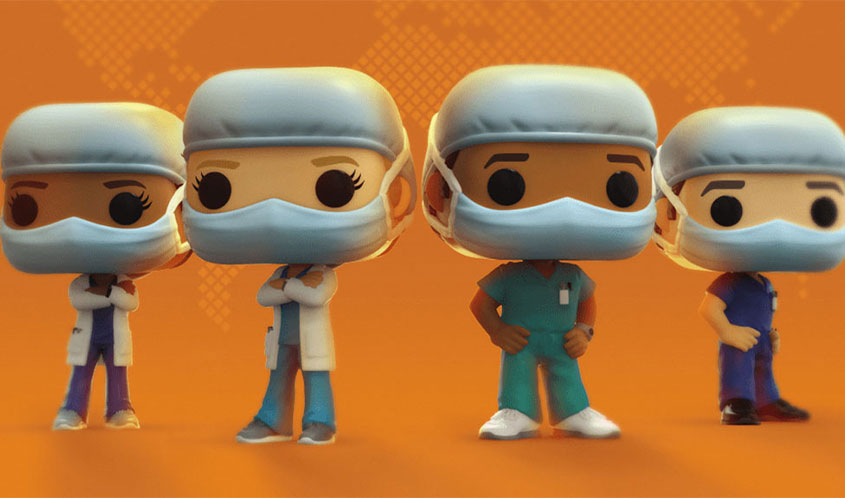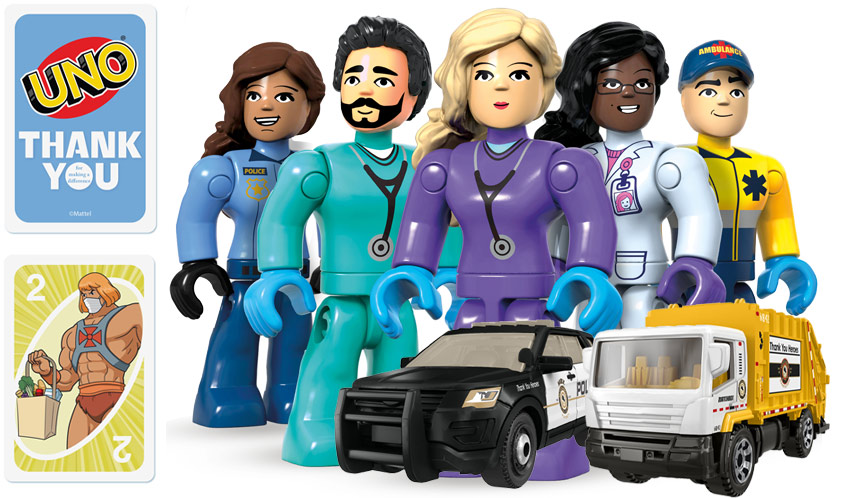
The toy industry continues to adapt in survival mode as the coronavirus challenges the retail landscape.
Six months ago, the idea that a pandemic could happen on U.S. soil was something that few, if any, were considering. The “coronavirus” was tossed around as a problem that would stay overseas. Toy fair season kicked off in Hong Kong amid fears of disruption thanks to regional protests, but went off without a hitch. Shows in London, Nuremberg, and New York took place, each with increasing anxiety that this virus and the disease it causes — COVID-19 — could become a real threat to business not just in the U.S., but around the world.
THE THREAT BECOMES REALITY
Earnings season kicked off on April 29 as Hasbro reported a 20% increase in U.S. sales despite an 8% drop globally. On the same day, The NPD Group reported a surprise 7.6% increase in toy retail sales for the U.S. market, fueled by categories including games, puzzles, and outdoor toys — the perfect activities for families that had received a gift that they never expected: time at home together.
As earnings rolled out, mixed signals rippled through the markets and the media. Differing methodologies in data sampling and collection between market and government agencies showed massive declines in retail, while toy sales were reportedly up despite store closures and other business disruptions. If toy sales were up, why were so many companies reporting sales declines? Even more concerning were the rumblings that layoffs began taking place in the toy industry almost immediately following the close of Toy Fair New York.
The first quarter was a mixed bag of conflicting numbers and differing results as numerous CEOs began to preemptively warn investors and analysts that the second quarter could be an absolute financial disaster.
The reality is that despite some consumer hesitation, first-quarter numbers only reflect a few week’s worth of store closures due to stay-at-home orders and the new age of social distancing. The second quarter will reflect the full brunt of retail closures paired with the one-two punch of families pulling back on spending as record unemployment swept across the U.S. A third variable is the cancellation of live events to which many toy and game makers have become tethered. Funko cautioned a shocking 60% decline in retail sales in Q2 as the U.S. Census Bureau reported that combined retail sales across all categories fell more than 16% in April.

UNEXPECTED SIDE EFFECTS
According to a May report from The NPD Group, the video game industry had a record $10.86 billion first quarter following several quarters of decline. The lion’s share of sales came from digital content that could be delivered without consumers ever having to leave their homes. Even struggling retailer GameStop, which took considerable heat for its handling of store operations and employee safety in the early weeks of the pandemic, saw a 519% increase in digital sales as comparable same-store sales dropped 17% for those that were able to stay open in some capacity.
“As the pandemic spread, we leaned in on our upgraded omnichannel capabilities to fulfill customer orders through curbside pick-up where available,” said GameStop CEO George Sherman in a statement to investors.
Rivals Walmart and Target each reported a 10% increase in same-store sales for the first quarter, and sales of toys evolved as the country went through waves of necessity and preference.
“Puzzles and video games took off. Parents became teachers. Adult bicycles started selling out as parents started to join the kids,” explained Walmart President and CEO Doug McMillon during the company’s recent call with investors. “An overlapping trend then started emerging related to DIY and home-related activities. Think games, home office, exercise equipment, and the like.”
EXPLORING NEW OPTIONS FOR MANUFACTURING
The U.S.-China trade war of 2018-2020 left a bad taste in many mouths. Paired with the social unrest in Hong Kong that overlapped with the spread of COVID-19 coming out of Wuhan, some sources say that a number of companies are looking to expedite a shift in production away from Mainland China, if only to avoid some of the constant headaches that have emerged in recent years.
As the trade war first indicated, neighboring countries and territories such as Taiwan, Malaysia, Vietnam, and India are likely to absorb some of the shift, but there are also signs that production in the U.S. could be on the upswing.
Cra-Z-Art recently opened a new facility in Florida to produce a significantly larger number of its arts and crafts supplies domestically.
“In response to our recent growth, the facility will allow us to more effectively and efficiently get our products to market for consumers to enjoy,” says Cra-Z-Art Chairman Lawrence Rosen. “We plan to increase our production of quality goods that are made right here in the U.S., which will ultimately contribute to the economy of the Jacksonville region and beyond,” he says.
Fueled by the recent shutdown of Imperial Toy, Sunny Days Entertainment stepped up to fill a market for bubble solution and accessories that has been booming with kids staying at home. In April, the company began shipping 24-ounce bottles of bubble solution from a factory in the U.S.
“We have been successful in doing this for 2020 as an emergency stop-gap to help some of our retail partners,” says Melvin Wells, president and CEO of Sunny Days Entertainment. “The bubble business has been strong during the shutdown and the exodus of Imperial has left a major gap in the market. We are working on a strategy for 2021 that will include a made-in-the-U.S. bulk
bubble solution.”
The oil market is also being watched closely. Following historic lows during a crash that sent prices into negative territory thanks to a lack of demand for crude oil and a price war between companies in the U.S., Russia, and Saudi Arabia, the market has been on the rebound. It’s a long-term possibility that looks unlikely, but should oil prices ever hold firm on the low end, it is possible that the cost for plastics might come down, prompting more to consider a production move.
The biggest challenges with moving business away from China remain the established business relationships with individual factories — some of which are decades-old — and the costs associated with moving or reproducing tooling in other countries, not to mention potential labor issues. These are all hot topics that were discussed at length amid the previous tariff threats last year.

CELEBRATING EVERYDAY HEROES
Following the early rush by toymakers to pivot their business to the production of personal protective equipment (PPE) and providing digital resources for families spending time together at home, the pandemic started a shift toward celebrating the real-life heroes working to keep the world safe and healthy. MGA Entertainment (MGAE) began taking orders for its L.O.L. Surprise! x MGAE Cares Frontline Hero doll. The limited-edition doll comes with an exclusive face mask accessory and MGAE Cares heart sticker. $1 from each doll sold will benefit Operation: Pac-Man, MGAE’s nonprofit effort started to provide PPE to hospitals and other facilities.
Mattel expanded its #ThankYouHeroes initiative to include limited-edition toys and collectibles. A collection of 16 action figures and a set of Fisher-Price Little People honoring essential workers was followed by #ThankYouHeroes offerings from Matchbox, UNO, and Mega Construx. The toys and vehicles celebrated the work of doctors, nurses, EMTs, delivery drivers, grocery store workers, police officers, firefighters, and more. Preorders for the entire line sold out.
THE FUTURE OUTLOOK
In June, many states had begun the phased processes of reopening businesses. Even with retail sales remaining surprisingly strong, the impact of COVID-19 continues to be felt. In a June 3 Form 8-K filing with the U.S. Securities and Exchange Commission (SEC), Funko revealed that it expects to incur approximately $1 million in charges related to certain termination benefits as the company’s furloughs became permanent layoffs for 25% of its global workforce. The ripple effect is expected to continue, but the outlook is fluid as there is no real way to predict if or when consumers will begin spending at pre-pandemic levels.
On June 8, new data emerged from the Global Port Tracker report issued by the National Retail Federation (NRF) and Hackett Associates indicating that retail imports continue to be less than last year, but are slightly better than what was forecast in May.
“It may still be too soon to say, but we’ll take that as a sign that the situation could be slowly starting to improve,” says NRF Vice President for Supply Chain and Customs Policy Jonathan Gold. “Consumers want to get back to shopping, and as more people get back to work, retailers want to be sure their shelves are stocked.”
This article was originally published in the June 2020 issue of the Toy Book. Click here to read the full issue!

